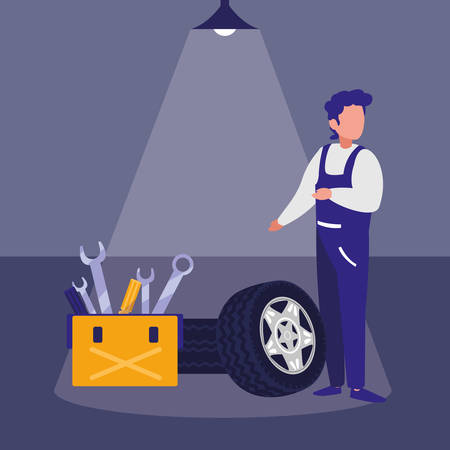Understanding the Importance of Your Braking System
When it comes to driving on American roads, your vehicle’s braking system plays a pivotal role in both performance and safety. Whether you’re navigating bustling city streets or cruising along scenic highways, having an efficient braking system ensures that you can react quickly and confidently to unexpected situations. In fact, the effectiveness of your brakes directly impacts your ability to avoid accidents, protect passengers, and maintain control during sudden stops or adverse weather conditions. Upgrading your braking system isn’t just about boosting stopping power—it’s also about enhancing your daily driving experience by promoting smoother rides and reducing wear on essential components. As Americans increasingly embrace eco-friendly transportation options and advanced automotive technologies, keeping your brake system in top condition is an important step toward safer, more sustainable mobility for everyone on the road.
Signs It’s Time to Consider an Upgrade
Keeping your vehicle’s braking system in top shape is essential for both performance and safety, especially on the diverse roadways of America. Recognizing the signs that your brakes need attention can help you avoid dangerous situations and costly repairs down the line. Below, we’ll break down the most common indicators that it might be time to upgrade your braking system.
Common Warning Signs
Your car often tells you when something is wrong—if you’re willing to listen. Here are some of the key signals that suggest your brakes may require improvement or even a full upgrade:
| Indicator | Description |
|---|---|
| Longer Stopping Distances | If you notice it takes more time or distance to come to a complete stop, your brake components could be worn out or underperforming. |
| Unusual Noises | Squealing, grinding, or clicking noises often mean your brake pads are worn or there’s debris lodged in the system. |
| Vibration in Pedal | A vibrating or pulsating brake pedal can indicate warped rotors or uneven wear, which impacts stopping power. |
| Warning Lights | The brake warning light on your dashboard shouldn’t be ignored—it signals an issue with the hydraulic system or low brake fluid. |
| Soft or Spongy Pedal Feel | If the brake pedal feels soft underfoot or sinks toward the floor, air or moisture may have entered the brake lines, reducing effectiveness. |
| Poor Response in Wet Conditions | If braking performance drops significantly during rain or snow, it may be time for a more advanced braking system designed for all-weather reliability. |
Why These Signs Matter in Everyday Driving
From busy city commutes in New York to mountain drives in Colorado, reliable brakes are non-negotiable. Ignoring these early warning signs not only puts you at risk but can also affect your car’s resale value and overall sustainability by leading to premature wear on other components. In fact, maintaining an efficient braking system supports greener driving by minimizing resource waste and maximizing vehicle lifespan—an important consideration as America moves toward more sustainable mobility solutions.

3. Choosing the Right Braking Components
When it comes to upgrading your braking system for better performance and safety, selecting the right components is key. There’s a wide range of options available, each designed to fit specific driving styles and vehicle types. Here’s how you can break down your choices and make an informed decision that matches both your needs and sustainability goals.
Performance Brake Pads
Brake pads are one of the most cost-effective upgrades for improved stopping power. Performance brake pads are typically made from advanced materials like ceramic or semi-metallic compounds, which offer better heat resistance and consistent braking under stress. If you drive in heavy city traffic or enjoy spirited weekend drives through winding roads, look for pads with low dust formulas and longer lifespan—they’re not only safer but also more eco-friendly by reducing waste and airborne particulates.
High-Quality Rotors
The rotors, or brake discs, play a crucial role in dissipating heat generated during braking. Upgraded rotors come in several types—drilled, slotted, or even carbon-ceramic composites. Drilled or slotted rotors enhance cooling and help prevent brake fade under intense use, making them ideal for drivers who tow, haul heavy loads, or participate in track days. For daily commuters seeking durability with lower environmental impact, opt for rotors manufactured from recycled metals or those certified by recognized green standards.
Upgraded Calipers
Calipers are responsible for squeezing the brake pads onto the rotors. Upgrading to multi-piston performance calipers can provide more even pressure distribution and stronger stopping force. These are particularly beneficial if you’ve increased your vehicle’s horsepower or added larger wheels and tires. For most American drivers, a well-designed two- or four-piston caliper upgrade balances everyday usability with reliable performance while supporting longer-lasting brake components—less frequent replacements mean less material waste over time.
Selecting the Best Fit
Your choice of braking components should reflect how you use your vehicle. City drivers might prioritize low-noise, low-dust pads and rotors; off-roaders may need robust hardware that resists mud and water; high-performance enthusiasts could benefit from track-ready kits. Always consult with reputable auto shops or manufacturers who understand the latest green innovations in braking systems. Investing in quality parts not only enhances safety but also supports a future-focused approach to automotive care—driving smarter for both you and the planet.
4. DIY Installation Versus Professional Help
When considering how to upgrade your braking system for better performance and safety, a common question arises: should you tackle the installation yourself or trust a professional? Both options have distinct advantages and drawbacks, especially when factoring in local regulations, warranties, and the peace of mind that comes with a job well done.
Weighing Your Options: DIY vs. Professional Service
| Aspect | DIY Installation | Professional Help |
|---|---|---|
| Cost | Generally lower upfront; only parts and basic tools required. | Higher due to labor charges, but includes expertise and specialized equipment. |
| Skill Level | Requires mechanical knowledge and confidence working with brake systems. | No skills needed from you—rely on trained technicians. |
| Time Investment | Can take several hours, especially for first-timers. | Usually faster turnaround thanks to experience and proper facilities. |
| Warranty & Insurance | May void manufacturer warranty if not performed correctly; liability rests with you. | Work is often warrantied; maintains compliance with most vehicle warranties and insurance requirements. |
| Sustainability | You control part selection—opt for eco-friendly components. | Shops may offer sustainable options but selection might be limited by suppliers. |
| Local Regulations | You must research compliance with state laws regarding brake modifications. | Professionals are usually up-to-date on all relevant local regulations and standards. |
The American Context: Why It Matters
In the United States, car culture celebrates hands-on DIY upgrades, but recent trends emphasize safety, environmental responsibility, and adherence to regulations. Certain states have strict rules about aftermarket brake modifications or require inspections after significant changes. If your vehicle is under warranty or lease, unauthorized work could result in costly penalties or loss of coverage. Additionally, some insurance policies may not cover damages if the brakes were not installed by a certified mechanic.
Sustainable Choices and Peace of Mind
If sustainability is a priority—such as choosing low-dust pads or recycled rotors—you might prefer DIY so you can handpick each component. However, many reputable shops now offer green alternatives as consumers demand more planet-friendly solutions. Ultimately, whether you decide to go hands-on or leave it to the pros, always prioritize safety, follow local laws, and consider how your choice impacts long-term vehicle reliability and environmental footprint.
5. Maximizing Safety and Sustainability
When considering a brake system upgrade, its important to not only focus on performance but also on the environmental impact of your choices. Recent advancements in eco-friendly braking materials have made it easier than ever to enhance both safety and sustainability on American roads.
Choosing Eco-Friendly Brake Pads and Rotors
Traditional brake pads often contain copper, asbestos, or other harmful substances that can leach into the environment. Today, manufacturers offer low-copper or copper-free ceramic and organic brake pads that deliver excellent stopping power while reducing toxic dust and heavy metal runoff. Similarly, rotors made from recycled steel or innovative composite materials help lower your vehicle’s carbon footprint without compromising durability.
Smart Maintenance for a Greener Future
Regular brake inspections and timely replacement of worn components not only prevent accidents but also minimize waste. Using non-toxic, biodegradable brake cleaners and properly recycling old brake parts are simple steps that make a big difference. Additionally, some garages now use water-based lubricants and environmentally responsible disposal methods, supporting cleaner communities across the U.S.
Driving Change: Safer Roads, Cleaner Planet
Upgrading your braking system with green technology isn’t just about personal safety—it’s about contributing to a broader movement for sustainable transportation. By selecting eco-friendly parts and adopting mindful maintenance practices, you play an active role in promoting safer roads and protecting the environment for future generations.
6. Post-Upgrade Best Practices
Breaking In Your New Brake Components
Once your upgraded braking system is installed, the first step is to properly break in (or “bed in”) your new brake pads and rotors. This process ensures even material transfer, reduces the risk of warping, and optimizes performance. Start by making a series of moderate stops from about 35-40 mph down to 5 mph—typically 8 to 10 times—without coming to a complete stop or letting the brakes cool off in between. Follow this with several harder stops from around 45 mph to nearly a standstill. Always allow your brakes to cool after bedding in to avoid glazing. Refer to manufacturer guidelines for specific break-in procedures, as recommendations can vary based on the materials used.
Maintaining Peak Performance
To keep your upgraded braking system performing at its best, regular maintenance is crucial. Inspect your brake pads and rotors every few months for signs of wear, uneven surfaces, or scoring. Check fluid levels regularly and consider upgrading to high-performance brake fluid if you haven’t already—it’s more resistant to heat and fade. Don’t forget about your brake lines; look for leaks or cracks, especially if you’ve switched to stainless steel lines. Address any unusual noises or changes in pedal feel immediately, as these can signal underlying issues.
Keeping Your System in Top Shape Long-Term
Longevity is all about proactive care. Clean brake dust from wheels frequently since excessive buildup can affect both aesthetics and function. Use only recommended cleaning products that won’t corrode your upgraded components. When replacing pads or rotors, always use compatible parts designed for your system to maintain safety and efficiency. If you drive in harsh conditions—like wet climates or salted winter roads—consider scheduling professional inspections more often. Finally, stay mindful of eco-friendly driving habits: avoid excessive hard braking when possible, as it minimizes wear and supports sustainable vehicle operation.
Conclusion: Invest in Ongoing Care for Sustainable Performance
Upgrading your braking system is just the beginning of a safer and more responsive driving experience. By following these post-upgrade best practices, you’ll maximize your investment and contribute to a longer-lasting, environmentally conscious ride. Remember, ongoing attention keeps both you and your community safer on America’s roads while supporting a future-focused approach to vehicle care.

